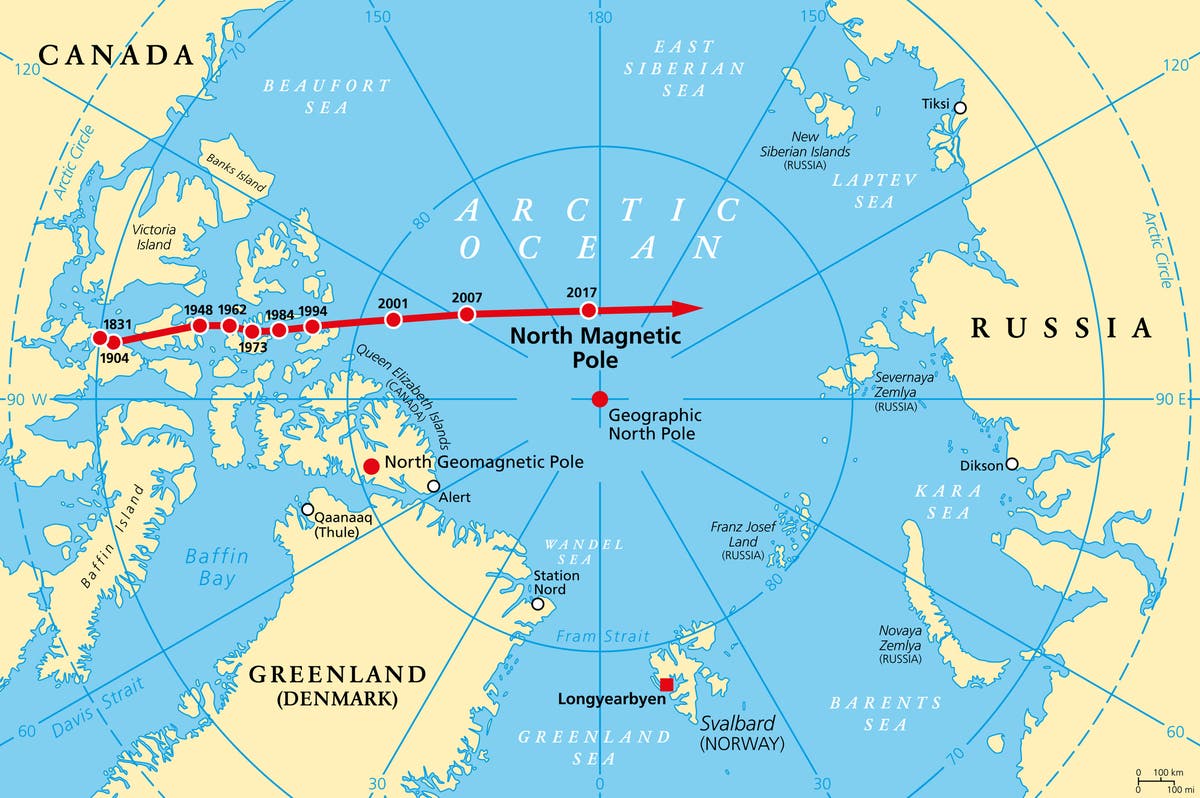Magnetic North Pole's Unprecedented Shift Towards Russia

Scientists have observed an unprecedented acceleration in the movement of the magnetic North Pole, a phenomenon that is challenging established models of Earth's magnetic field. The pole, which dictates the direction of compass needles in the Northern Hemisphere, is rapidly shifting towards Siberia, exhibiting behaviour unlike anything seen in centuries.
The location of the magnetic North Pole is not static; it varies due to the dynamic nature of Earth's magnetic field, generated by the churning molten iron in the planet's outer core. This differs significantly from the geographic North Pole (true north), which remains fixed at the intersection of all lines of longitude.
Dr William Brown, a global geomagnetic field modeller at the British Geological Survey (BGS), explains the complexity: "It's a large, chaotic, and turbulent ball of molten iron swirling within the Earth's core that generates the magnetic field. While we can monitor and observe changes, precise prediction of its future behaviour is challenging."
For centuries, the magnetic North Pole drifted relatively slowly along the northern Canadian coastline. However, its movement accelerated significantly after entering the Arctic Ocean in the 1990s, rapidly heading towards Siberia. Estimates suggest a movement of approximately 10-15km per year between 1600 and 1990. This pace dramatically increased in the early 2000s, reaching around 55km per year, according to Dr Brown. More recently, however, the rate has slowed to approximately 25km per year.
This data is derived from the World Magnetic Model, a collaborative project between the BGS and the US National Oceanic and Atmospheric Administration (NOAA). This model, updated regularly, predicts the pole's location and is crucial for numerous applications. A new update is scheduled for release in December.
The World Magnetic Model underpins a wide range of technologies. From smartphone compasses to GPS systems and military navigation, particularly crucial for submarines operating in Arctic waters, accurate modelling of the magnetic field is paramount. As Dr Brown highlights, "The World Magnetic Model is integral to almost any piece of technology, from smartphones and cars to military jets."
The unpredictable fluctuations in the Earth's core are responsible for the pole's erratic movement. Heat escaping from the planet's core drives the motion of the liquid metal, creating the magnetic field. Variations in the swirling motion of this molten iron, approximately 2,000 miles beneath the surface, directly influence both the field's strength and the magnetic pole's position.
While precise prediction remains elusive, the BGS continuously monitors the Earth's magnetic field using a network of ground stations and satellites, creating detailed maps of the field's variations across different locations. This ongoing monitoring is crucial for updating the World Magnetic Model and ensuring the accuracy of technologies reliant upon it. The unprecedented shift of the magnetic North Pole underscores the dynamic and unpredictable nature of Earth's magnetic field, highlighting the importance of continued research and monitoring.





